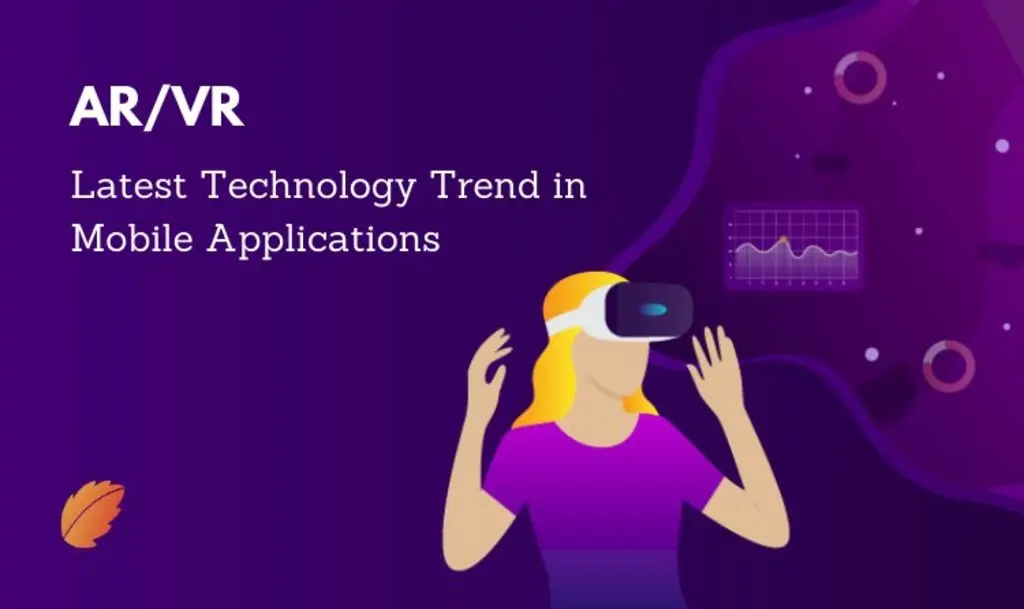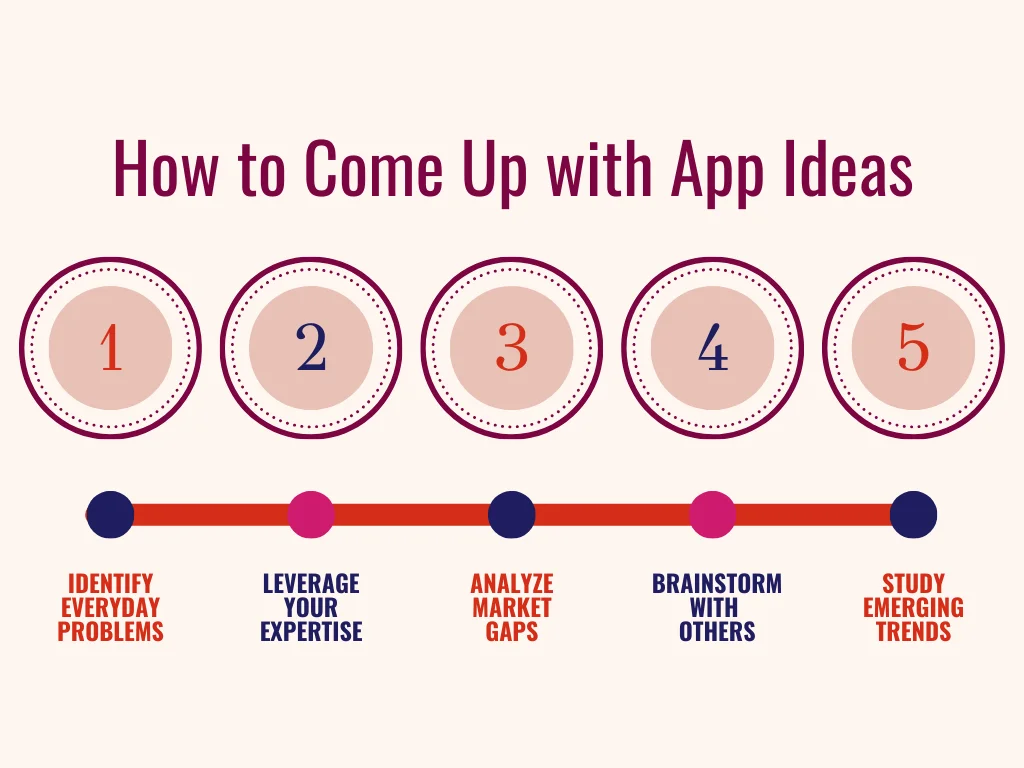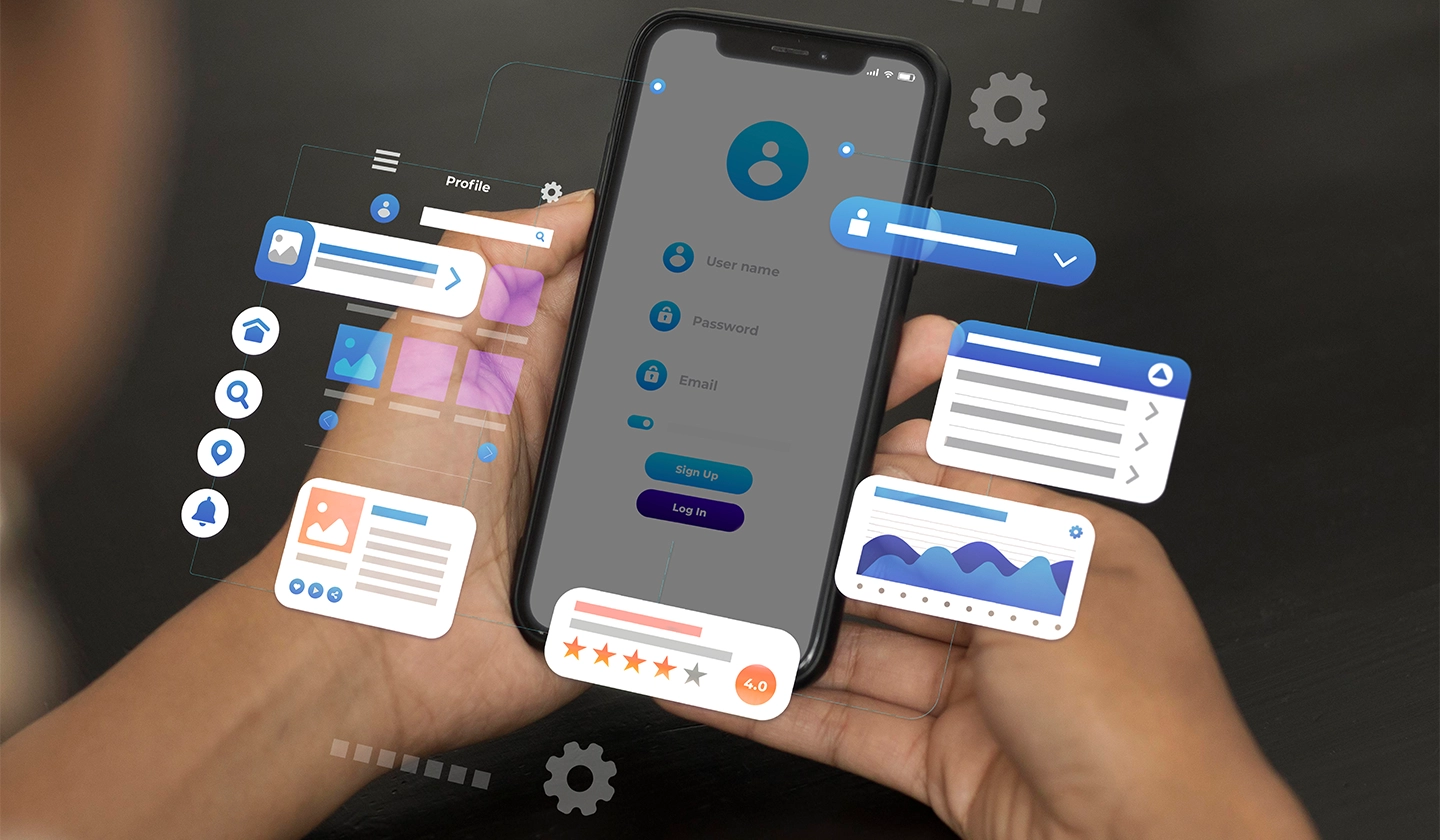
Dive into the evolution of mobile apps by 2030, fueled by AI, AR, and VR innovations. Uncover breakthroughs in personalization, immersion, and upcoming challenges.
Table of Contents
Introduction
Did you know that people now spend over 4 hours a day using mobile apps? (Source: DataReportal, 2023). Our smartphones are now essential daily tools, transforming how we work, socialize, and play. But if you think today’s app landscape is cutting-edge, brace yourself—an even bigger wave of change is imminent.
By 2030, the integration of Artificial Intelligence (AI), Augmented Reality (AR), and Virtual Reality (VR) will do more than refine mobile apps—they’ll reinvent them entirely. This isn’t sci-fi; this is a near-term game-changer every small business owner, marketing professional (especially aged 25-45), and enterprise IT decision-maker must recognize and adapt to. The future of business, collaboration, and everyday life will be literally in your hands, offering unmatched levels of personalization, immersion, and efficiency.
Digital transformation is accelerating, shattering old expectations of technology’s role. At its forefront is mobile app development, moving from mere convenience to delivering connected, intelligent, and immersive experiences.
In this article, we’ll spotlight the central forces—AI, AR, and VR—driving this revolution, and reveal upcoming changes, challenges, and the immense opportunities available to future-focused organizations.
The Future of Mobile Apps: Key Drivers
Mobile applications live in a fast-shifting landscape shaped by relentless innovation. The next era will be defined by three converging forces: AI, AR, and VR. These technologies aren’t just industry jargon—they are ushering in a new generation of enterprise apps and user interactions, setting the bar for smarter, more engaging, and contextually aware solutions.
Artificial Intelligence (AI)
AI quietly powers much of the digital experience, and its role in apps is about to expand dramatically. Its major influence? Creating hyper-personalized experiences that go far beyond generic suggestions, offering interactions that seem almost prescient.
Forget generic feeds and static interfaces. AI now analyzes every aspect of user behavior, past activity, and situational context to craft experiences that feel built for each individual. It’s not just about what to view next; it’s about understanding needs, automating routines, and perfecting every action in the app. The result? Apps that feel tailor-made to the user.
Example: AI-driven recommendations boosting engagement
Think of your favorite streaming app’s uncanny ability to surface content you’ll love—AI is its secret. Soon, this intelligence will be woven throughout all mobile apps. Imagine a task management tool that not only organizes your schedule but—by referencing your habits, workload, and even mental energy—suggests the optimal moments for deep focus. Or a shopping app that, accounting for your style, purchases, budget, and even today’s weather, curates complete, shoppable looks just for you.
Such predictive personalization makes apps truly essential both at work and at leisure, and AI-powered development is now mission-critical for advanced mobile strategies.
User preference statistics for tailored experiences
Research shows personalization is a top user demand. A Salesforce report found 80% of customers view the overall experience as important as product or price, confirming the need for deep personalization. Likewise, an Accenture survey reports 91% of consumers prefer brands that offer relevant, customized recommendations. This demonstrates why AI-driven features will soon be table stakes. Companies overlooking this trend are courting irrelevance in the evolving mobile ecosystem.

A conceptual mobile app screen demonstrating AI-driven personalized content and smart suggestions.
Augmented Reality (AR)
AR allows digital content to overlay and interact with the physical world, revolutionizing how we perceive and engage with our surroundings. While games like Pokémon Go popularized AR, its greatest potential is just starting—especially in reshaping retail, marketing, and business operations. AR is deeply altering how we discover products and environments, dissolving the boundaries between digital and real.
AR’s impact on retail and shopping experiences
AR-powered shopping and product visualization apps let you “preview” purchases in your own space—see that new couch in your living room, or check if those glasses match your face, all through your phone. This not only boosts buyer confidence but also makes shopping interactive and fun. For retailers, it translates to higher sales, fewer returns, and a more connected brand experience. AR is quickly becoming indispensable for innovative retail brands.
Example: AR apps empowering product visualization
- IKEA Place: This app empowers users to virtually position IKEA furniture at home, revealing fit, scale, and compatibility with existing décor, streamlining decisions and increasing purchase intent.
- Sephora Virtual Artist: Users can try on makeup virtually, comparing shades and styles instantly. It’s risk-free experimentation for the user and higher sales for the brand.
- Wayfair’s View in Room: Mirroring IKEA’s approach, Wayfair’s app helps shoppers imagine real products in their spaces before buying.
Case Study: AR’s success in major retail brands
Consider L’Oréal’s Style My Hair app: by employing AR to let users “try on” different hair colors and styles, L’Oréal fueled engagement and conversion rates. Consumers could experiment safely and interactively, transforming product discovery into a personalized journey. This move secured brand loyalty and demonstrated AR’s power in customer engagement and retention. For marketers, these tools are a goldmine for new customer acquisition.
Virtual Reality (VR)
Unlike AR, which supplements reality, VR immerses users in completely virtual settings. Often considered the domain of gaming, VR’s fastest growth is happening in education, training, and remote work, heralding a new era in how we interact, learn, and collaborate. The depth of VR immersion enables unique, lifelike simulated environments.
VR’s role in education and remote teamwork
VR’s ability to create rich, lifelike simulations positions it as the ultimate tool for learning and remote group work. Professionals and students use VR for skills training, advanced problem-solving, and meetings that feel more “real” than any video call. VR spaces foster genuine presence, collaboration, and deeper understanding.
Example: VR-enabled training and educational programs
- Medical Training: Surgeons can rehearse complex procedures in virtual operating rooms, enhancing dexterity and preparing for rare events—without any patient risk.
- Technical Training: Engineers learn equipment assembly, operation, and repair using digital twins and interactive simulations, which lower costs and risks.
- Virtual Classrooms and Field Trips: Schools are deploying VR to let students explore historical sites, anatomy, or conduct lab experiments with zero risk, making abstract concepts accessible and vivid.
VR’s promise in enterprise settings
Beyond training, VR stands to revolutionize business collaboration. Imagine international teams gathering in virtual boardrooms, working on shared 3D models, and engaging with spatial audio for true “face-to-face” communication. VR also accelerates product prototyping, letting cross-disciplinary teams interact with new designs virtually for instant feedback and iteration. Today’s leading app developers are already building these immersive tools, pointing the way to the collaborative workplaces of tomorrow.
Anticipated Changes in Mobile App Functionality by 2030
The merging of AI, AR, and VR will do more than add flashy features to apps—it will overhaul their core functionality. Apps will become remarkably smart, proactive, and integral to how we work and live, elevating expectations and forcing firms to rewrite their digital strategies.
Predictive Capabilities
Tomorrow’s apps will shift from responsive to anticipatory. No longer just responding to requests, they’ll sense needs, predict your next move, and suggest timely, relevant solutions before you even ask. This upgrade will turn mobile devices into truly intelligent companions.
How task management apps will evolve
Right now, task management tools help create lists and set reminders. By 2030, AI-powered platforms will become workday copilots, able to:
- Auto-prioritize: By analyzing deadlines, task dependencies, your calendar, and past patterns, AI will suggest which tasks to tackle first.
- Smart scheduling: By plugging into calendars, communication apps, and external factors (like traffic or weather), task apps can suggest the best times for meetings, focus sessions, and breaks.
- Workflow automation: Apps will identify repeatable tasks (like meeting summaries, follow-ups) and automate them, letting you focus on high-impact work.
- Resource aggregation: Prior to a meeting, the app could gather all relevant files, contacts, and previous notes automatically.
This leap will transform to-do lists into adaptive personal assistants, redefining productivity and boosting the value of enterprise app development.
Real-time, data-driven insight for engaging users
AI will process and interpret huge volumes of user data instantly, offering brands real-time insight into user needs, actions, and challenges. This isn’t passive analytics, but active, responsive intelligence—apps will update their layouts, content, notifications, and even communication style instantly according to the user’s mood and context. As AI redefines engagement, marketers must understand and harness this power to keep users loyal.
User Experience Redefined
Flat, two-dimensional screens are merely a starting point. Tomorrow’s user experience in mobile will be driven by immersion, seamless digital-physical blending, and organic interactions, completely changing the way people connect with technology.
How UX design will mesh AI and immersive tech
Future UX will employ AI for adaptive, real-time interfaces, making every interaction unique. AR and VR introduce new forms of interaction—think gestures, voice, or gaze, not just taps. Picture this:
- Context-driven interfaces: Apps that adapt their look and features depending on your exact location, time, or even mood (e.g., a retail app that activates “in-store mode” for inventory on site).
- Spatial computing: Manipulating 3D objects around you in AR, or moving through full VR universes, so your surroundings become interactive workspaces.
- Emotional AI: Apps detecting and reacting to your mood (via tone of voice, expressions, usage pattern), adjusting their recommendations, tone, or help accordingly.
Such advances will produce not just user friendly, but deeply engaging, almost magical experiences—raising the bar for mobile app development.
Gamification and consumer engagement opportunities
AR and VR are a powerful foundation for advanced gamification—making everyday interactions captivating. Imagine in-store AR scavenger hunts for real rewards, VR education apps doling out achievements, or AI-driven fitness apps dynamically adjusting workouts and challenges. These make apps enjoyable, forge emotional connections, and build intense loyalty—particularly valuable for marketers targeting younger, tech-forward consumers.
| Feature Category | Current Mobile App State (Approx. 2023) | Mobile App by 2030 (AI, AR, VR Integration) |
|---|---|---|
| Personalization | Basic recommendations, segmented content, rule-based alerts. | Hyper-personalized, predictive experiences based on real-time context, sentiment analysis, proactive needs anticipation. |
| Interaction Methods | Touch (tap, swipe, pinch), text input, limited voice commands, some gesture control. | Natural language voice, advanced gestures, eye-tracking, haptics, spatial interaction with 3D objects, thought interfaces (emerging). |
| Visual & Content | 2D interfaces, embedded videos, static images. | 3D immersive environments (AR overlays on reality, full VR worlds), dynamic, adaptive, and interactive content. |
| Assistance Level | Reactive search, basic chatbot support, limited automation. | Proactive AI agents, intelligent task automation, predictive problem-solving, context-aware assistance. |
| User Engagement | Notifications, social sharing, loyalty programs. | Immersive gamification, interactive storytelling, adaptive challenges, community-driven virtual experiences. |
Table 1: Evolution of Mobile App Features with AI, AR, and VR.
Challenges Ahead
While AI, AR, and VR promise astonishing benefits for mobile apps, adopting these technologies isn’t without hurdles. Business owners, marketers, and IT leaders must anticipate and confront these issues head-on to ensure sustained progress. Navigating AI’s impact on society and infrastructure is crucial.
Adoption Barriers
These cutting-edge advancements also create steep adoption challenges, forcing organizations to commit resources and plan strategically.
High costs associated with AI, AR, and VR development
Building advanced AI, AR, or VR apps calls for elite talent, robust hardware, heavy computational investment, and exhaustive QA—all of which elevate development costs far above conventional apps. For young companies or startups, those high barriers could slow innovation. Partnering with specialized app development firms can help, but adds to expenses, making careful ROI analysis a must.
Technical obstacles to seamless deployment
Development challenges extend far beyond budgets. AI implementation demands deep know-how in machine learning and massive data management. AR needs precise, lightning-fast spatial mapping and flawless device integration. VR contends with graphic performance, elaborate modelling, and UX nuances that can directly affect comfort. Recruiting and retaining such scarce, specialized talent is a growing struggle for many organizations.
Case Study: Overcoming obstacles—Magic Leap’s journey
Magic Leap is a classic example: Initially positioned as a revolutionary AR device, it battled technical setbacks, soaring costs, and the reality gap between vision and mass-market acceptance. Ultimately, the company pivoted toward enterprise applications—such as remote technician support and high-end design, where the value justified the complexity and spend. The lesson: Startups should be ready to pivot, refining use cases for specific, high-return markets to achieve tangible commercial success. This highlights the importance of flexible strategy and a willingness to iterate.
Ensuring Data Privacy and User Trust
The more intelligent and deeply integrated apps become through AI, AR, and VR, the more personal data they demand and process. This raises serious ethical and operational concerns about data protection, making trust a centerpiece for successful adoption. Building safe, privacy-conscious AI agents requires careful foresight.
Why privacy is vital in modern tech
With news of data breaches and privacy scandals now routine, consumers are increasingly protective of their data. As AI-driven apps depend on accumulating vast data, trust is essential. Any hint of careless or obscure practices can destroy user confidence, trigger regulatory fines, and cripple a brand’s standing. Privacy-by-design must underpin any forward-thinking app development.
Data security best practices for mobile apps
- Limit data collection: Only request essential data, serving a clear function.
- Encrypt everything: Protect sensitive data in transit and at rest with strong, industry-standard encryption.
- Full transparency: Clearly inform users on what, why, and how data is used or shared, with simple, accessible privacy policies.
- User-driven controls: Offer easy, comprehensive settings for privacy, and secure explicit consent, particularly for sensitive info.
- Routine security reviews: Schedule regular, third-party audits, thorough penetration testing, and prompt remediation of weaknesses.
- Total compliance: Adhere strictly to all relevant privacy laws and standards (GDPR, CCPA, etc.), wherever you do business.
- Secure dev processes: Bake security into every development stage, from planning to launch and beyond.
For IT leaders, investing in robust infrastructure, ethical AI, and continuous education isn’t just a compliance checkbox—it’s a foundation for brand credibility in tomorrow’s app marketplace.
| Challenge Area | Specific Challenges & Risks | Mitigation Strategies for Businesses |
|---|---|---|
| Development & Cost | High R&D expenditure, scarcity of specialized talent, significant infrastructure investment. | Start with Minimal Viable Product (MVP) focus, leverage existing AI/AR/VR SDKs & platforms, consider strategic partnerships with expert mobile apps development companies, prioritize high-ROI use cases. |
| Technical Complexity | Integration difficulties, performance optimization, device fragmentation, ethical AI bias issues. | Invest in ongoing developer training & upskilling, utilize cloud-based solutions for scalability, conduct rigorous testing across diverse environments, establish robust ethical AI guidelines and oversight. |
| Data Privacy & Security | Intrusive data collection scrutiny, potential for breaches, complex regulatory compliance (GDPR, CCPA, etc.). | Implement ‘privacy by design’ principles, strong end-to-end encryption, transparent data policies, robust user consent mechanisms, regular security audits & penetration testing. |
| User Adoption | Steep learning curve for new tech, initial user skepticism, hardware limitations for full AR/VR experiences. | Focus on intuitive and delightful UX design, clearly articulate the value proposition, provide extensive educational content, implement phased rollouts, ensure broad cross-platform compatibility where feasible. |
Table 2: Key Challenges and Mitigation Strategies in Future Mobile App Development.
Implications for Businesses
The advance of AI, AR, and VR is not just technological—it’s a must-win battleground for any business looking to remain competitive, differentiated, and innovative as mobile transforms. The leaders of tomorrow will be those who build “AI and the future” into their DNA.
Why early adoption is a market advantage
- Capturing share: Launching uniquely advanced mobile solutions secures early, loyal customers craving cutting-edge experiences.
- Defining expectations: Lead, don’t follow, by shaping your industry’s digital standard and forcing rivals to play catch-up.
- Learning faster: Unlock rapid enhancements via early feedback, outpacing competitors in both iteration and improvement.
- Attracting talent: Innovative companies attract top AI, AR, and VR specialists, creating a cycle of ongoing advantage.
Such proactive strategies let startups and agile businesses outflank established competitors and claim new niches.
New income streams through advanced mobile features
- Subscription upgrades: Offer premium analytics, bespoke coaching, or exclusive AR/VR features as paid subscriptions.
- Digital asset sales: Market virtual goods—such as AR furniture, fashion, or VR experiences—inside your apps.
- Super-targeted advertising: Use AI for deeply personalized, high-value ads in immersive environments.
- Enterprise licensing: Build specialized features for verticals (like AR-guided maintenance or VR industrial training) and license to other companies, advancing mobile solution growth.
- Marketplace integrations: Host third-party services within AR/VR ecosystems, taking a commission on transactions (e.g., book after AR preview).
- Smarter e-commerce: Leverage AR-powered “try before buy” tools to boost conversions and minimize returns.
Each avenue expands revenue and redefines your business model, fueling the rise of modern development companies.
Action plan for acquiring AI, AR, and VR expertise
- Educate leaders: Make sure senior management grasps the full impact and ROI of these technologies.
- Recruit and reskill: Hire AI specialists, AR/VR developers, data scientists, and UX talent—or invest in upskilling your team via training and certification.
- Start small, scale up: Run pilot projects or MVPs to validate concepts and collect feedback before large investment. Adapt rapidly from each attempt.
- Build partnerships: Work with expert app studios, universities, or tech firms who can share proven knowledge and speed up development.
- Enable experimentation: Create room for R&D, incentivize innovative thinking, and celebrate productive failures as drivers of progress.
- Relentlessly focus on user value: Choose projects that solve actual user challenges or create meaningful enhancements, not just tech novelty.
- Stay up to date and nimble: With AI, AR, and VR evolving fast, institutionalize research and rapid adaptation as a core practice.
Investing early in these skills and mindsets is critical to thriving in a fast-changing mobile world.
Conclusion
The evolution from basic mobile tools to advanced, intelligent, and vividly immersive companions is accelerating fast. By 2030, Artificial Intelligence, Augmented Reality, and Virtual Reality will merge to deliver unprecedented personalization, seamless digital-physical interaction, and immersive environments redefining productivity, shopping, learning, and entertainment.
We’ve explored AI’s impact on deep personalization and predictive power; AR’s reinvention of shopping, marketing, and services; and VR’s ability to open totally new educational and collaborative frontiers. And we’ve openly addressed real challenges: sky-high development costs, technical skill gaps, and the absolute necessity of putting privacy and user trust at the center.
For small tech business owners, forward-thinking marketers, and enterprise IT leaders, the takeaway is unmistakable: adapting and innovating is not optional. Tomorrow’s winners will be those who strategically embrace these technologies now. Seize the opportunity, plan for challenges, and prepare to lead. The mobile future is already unfolding—your actions today will shape your place in it.
Are you ready to thrive in the fast-approaching future of mobile app innovation? Make sure your business stays ahead—subscribe to our newsletter for insider tips, expert reports, and step-by-step guidance on pioneering AI, AR, and VR app trends. Stay prepared, be inspired, and transform your strategy for 2030 and beyond!
Looking to stay ahead of the next wave of mobile innovation? Webologists helps businesses build AI, AR, and VR-powered mobile apps that drive engagement, improve user experience, and future-proof your brand for 2030 and beyond.
FAQs
-
What is Product-Market Fit (PMF) and why is it crucial for AI startups?
PMF is the ideal state where your product effectively satisfies a significant market demand, creating a foundation for sustained growth. For AI startups, achieving PMF isn’t optional; it’s vital for survival, ensuring your innovative solution truly connects with user needs and avoids high churn.
-
How does AI itself accelerate the process of achieving Product-Market Fit?
AI significantly speeds up PMF by enabling rapid product iteration and pinpointing user needs with data-backed insights. It leverages automated data analysis, predictive analytics for feature prioritization, and real-time A/B testing to quickly adapt and optimize AI products for the market.
-
What are the dangers for founders who misinterpret early positive traction as true PMF?
Misinterpreting early traction from niche users or enthusiasts can lead to overconfidence and a false sense of PMF. This optimism bias risks wasting resources, delaying crucial strategic shifts, and ultimately imperiling the startup’s future due to a lack of genuine, scalable market demand.
-
How should AI founders effectively measure Product-Market Fit for their unique products?
AI founders should track metrics beyond basic engagement, focusing on AI feature adoption rate, the accuracy and relevance of AI outputs, and the time-to-value users gain from AI. It’s crucial to also assess user disappointment if AI features were removed and the efficiency gains provided by the AI system.
-
Should AI founders view Product-Market Fit as a fixed destination or an evolving process?
PMF is a continuous spectrum, not a one-time achievement. AI founders must constantly evaluate and adapt their products due to dynamic markets, evolving user expectations, and rapid technological advancements, ensuring their AI solutions remain relevant, valuable, and competitive over time.





